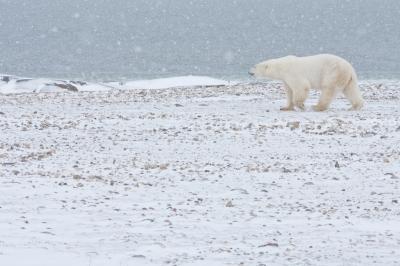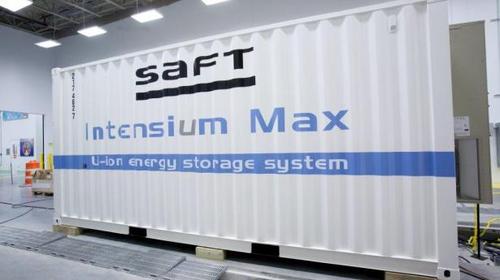This Firm Has Figured Out Reliable Energy Storage in the Frigid Arctic
Roughly the size of Illinois, Kotzebue is in Alaska’s Northwest Arctic Borough, where the annual average temperature is 22F. Saft braved the cold and figured out an energy storage solution for the area.
January 7, 2016
Those who live in cold climates know that their batteries face challenging conditions, as electrochemical activity slows down when the temperature drops. But what if you were to design a battery for use above the Arctic Circle? You would think that those people are out of luck, but Saft has developed an energy storage solution that might prove instructive to those living further south.

Saft, which makes a variety of lithium-based battery solutions, in November publicized that it delivered a containerized battery energy storage system to the Kotzebue Electric Association (KEA), an electric cooperative with 980 members based in Kotzebue, Alaska. Roughly the size of Illinois, Kotzebue is in Alaska’s Northwest Arctic Borough, where the annual average temperature is 22F. It has depended historically on diesel-powered generators for electricity and in recent times a microgrid using hybrid wind-diesel power.
The Saft battery energy storage system, trade-named Intensium Max+ 20M, which provides 950 kWh and operates in temperatures as low as -58F, works in tandem with an ABB 1.2 MW power conversion system and grid connector transformer. It will help KEA’s microgrid ride out fluctuations in wind output and time-shift excess wind energy, providing significant reductions in diesel consumption.

A typical Saft containerized lithium-ion energy storage system. One of these was recently delivered to an Alaskan electric power cooperative north of the Arctic Circle to work in subzero temperatures.
(Source: Saft)
Jim McDowall, business development manager for Saft America’s ESS Business Unit, said the Intensium package is a lithium-ion technology based on lithium nickel-cobalt-aluminum oxide that has been modified to minimize the energy required to maintain the battery at its operating temperature, since that energy represents a parasitic load on the system.
That is achieved through the use of an undisclosed insulating material and a hydronic heater coil that allows the battery to be heated using hot glycol solution. The glycol is heated in an oil-fired heater tank and circulated to both the battery container and diesel. Use of electrical heating elements is highly undesirable in these environments because of the high cost of generation.
READ MORE ENERGY STORAGE ARTICLES ON DESIGN NEWS:
Saft produces a range of cells with varying power-to-energy ratios. High-power cells are used in systems that provide ramp-rate control for renewable energy facilities, where discharges last only a few minutes. Medium-power cells are used in systems that provide a mix of power and energy from around 15 minutes to an hour, which are used in the systems provided to Kotzebue and Northwest Territories. High-energy cells are used in systems with discharge periods on the order of hours.
The company aims its Intensium energy storage technology at operators of hybrid power systems across Northern Canada and Alaska, and any other remote applications requiring the operation of containerized battery systems in cold environments. The KEA installation is Saft’s second project for a remote community above the Arctic Circle. Blake Frye, Saft’s vice president of sales and energy storage at Saft, noted that the company has found a niche in serving the energy storage needs of power networks where extreme temperatures require innovative design and performance.
RP Siegel, PE, has a master's degree in mechanical engineering and worked for 20 years in R&D at Xerox Corp. An inventor with 50 patents, and now a full-time writer, RP finds his primary interest at the intersection of technology and society. His work has appeared in multiple consumer and industry outlets, and he also co-authored the eco-thriller Vapor Trails.
Like reading Design News? Then have our content delivered to your inbox every day by registering with DesignNews.com and signing up for Design News Daily plus our other e-newsletters. Register here!

Design engineers and professionals, the West Coast’s most important design, innovation, and manufacturing event, Pacific Design & Manufacturing, is taking place in Anaheim, Feb. 9-11, 2016. A Design News event, Pacific Design & Manufacturing is your chance to meet qualified suppliers, get hands-on access to the latest technologies, be informed from a world-class conference program, and expand your network. (You might even meet a Design News editor.) Learn more about Pacific Design & Manufacturing here.
You May Also Like

.jpg?width=300&auto=webp&quality=80&disable=upscale)

